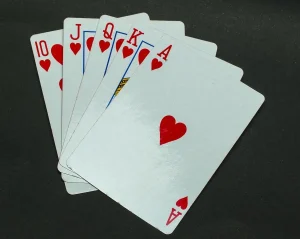The Science of Poker Tells and Body Language Analysis

You’re sitting at the poker table. The air is thick with tension. The player across from you, who’s been quiet all night, suddenly starts drumming their fingers. They bet big. Are they confident? Or are they nervous? This, right here, is the ancient dance of poker tells—the unintentional physical reactions that can reveal a player’s hand.

But it’s not just a guessing game anymore. There’s a real science to it. We’re moving beyond old wives’ tales and into the realm of psychology, micro-expressions, and behavioral analysis. Let’s dive in.
Beyond the Sunglasses: What Are Poker Tells, Really?
A “tell” is any subconscious behavior that gives away information about your hand or your state of mind. Think of it as a leak in your poker armor. For decades, players relied on clichés: a shaky hand means a strong hand, or someone avoiding eye contact is bluffing. The truth is, well, it’s far more nuanced.
Honestly, the classic tells are often misleading because they’re what everyone is looking for. The real gold is in the subtle, consistent patterns unique to each player. It’s about establishing a baseline—how someone acts when they’re relaxed—and then spotting the deviations.
The Psychology Behind the Leak: Why We Can’t Help Ourselves
Our bodies often react before our conscious minds can censor them. This is rooted in our basic neurobiology. The amygdala, the brain’s threat-detection center, can trigger a fight-or-flight response during a high-stakes hand. You might feel completely calm, but your body is screaming “danger!”
This manifests in two main types of tells:
- Activation Tells: These are signs of arousal or excitement. Think dilated pupils, a slight change in breathing, or fidgeting. A player with the nuts might struggle to contain their excitement.
- Comfort/Discomfort Tells: This is huge. When a player is confident in their hand, they tend to display “comfort” cues—leaning back, a more open posture. When they’re bluffing or weak, they might exhibit “discomfort”—touching their neck, covering their mouth, or shrinking their posture. It’s a subconscious attempt to self-soothe.
A Practical Guide to Common Poker Tells and Body Language Cues
Okay, let’s get down to specifics. Here’s a breakdown of some common areas to watch. Remember, context is king. A single twitch doesn’t mean anything; a pattern does.
The Eyes: Windows to the Soul (and the Hand)
Eye behavior is notoriously difficult to control. Look for:
- Pupil Dilation: This is a dead giveaway of arousal, often linked to excitement over a strong hand. It’s an involuntary response, nearly impossible to fake.
- Eye Blocking: When a player hears a bet or sees a card and briefly closes their eyes or rubs their eyelids, it can signal discomfort or disappointment. It’s like the brain is trying to block out bad news.
- Gaze Aversion vs. Staring: The old myth is that liars look away. In reality, some liars will overcompensate with a tense, unwavering stare. The key, again, is a change from their normal, baseline behavior.
The Hands and Arms: More Than Just Chips
Hands are incredibly expressive. Watch how a player handles their chips.
A confident player might stack their chips neatly or make a firm, decisive bet. A nervous player, or someone bluffing, might fumble their chips, make a weaker, more tentative tossing motion, or their hands might shake not from strength, but from adrenaline-fueled anxiety. Also, watch for hand-to-face contact. A hand covering the mouth can be a subconscious attempt to hide a lie—or a grimace.
The Full Posture and Torso
The entire body tells a story. A player who suddenly sits up straight and leans forward after seeing the flop is likely engaged and interested. That’s often a sign of strength.
Conversely, if a player shrinks back, crosses their arms, or creates a physical barrier between themselves and the table, it can signal weakness or a desire to withdraw from the hand. It’s a primal act of self-protection.
The Modern Game: Countermeasures and the Digital Age
Here’s the deal: the best players know about tells. So, they work hard to eliminate their own. They practice a “poker face,” which isn’t just a blank stare—it’s about consistent, controlled behavior regardless of their hand. They might wear hoodies and sunglasses not to look cool, but to minimize the number of physical tells they leak.
And in the world of online poker, physical tells are, of course, irrelevant. This has shifted the skill set towards betting patterns, timing tells, and statistical analysis. Yet, the core principle remains the same: identifying patterns of behavior that reveal hidden information.
How to Use This Knowledge Without Going Crazy
You can’t, and shouldn’t, try to analyze every twitch from every player. You’ll get overwhelmed. Here’s a more practical approach:
- Establish a Baseline: For the first hour, just watch people. How do they act when they’re not in a hand? How do they stack their chips? How do they talk? This is your normal.
- Look for Deviations: The real information is in the change. Does a normally talkative player go silent? Does a still player start tapping their foot? That’s your cue.
- Correlate with Action: The most important step. When you see a tell, note what the player did. Did they bet big? Did they fold? Over time, you’ll build a reliable profile.
The Final Card on the Table
The science of poker tells isn’t about finding a magic bullet. It’s about becoming a more observant, more empathetic player. It’s about understanding that beneath the chips and the cards and the math, there’s a human being with a nervous system that’s been evolving for millennia. You’re not just playing the hand; you’re playing the person.
So the next time you’re at the table, take a moment. Look beyond your own cards. Listen to the silent conversation happening all around you. The most revealing stories aren’t always in the bets—they’re in a quickened breath, a guarded posture, a fleeting glance. And that, you know, is where the real edge lies.






